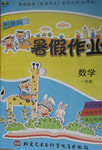题目内容
完形填空。
There is a workman in America who earns as much as a company director. He is Max Quarterman, a thirty-year-old plasterer (泥瓦匠).
Max lives in an upper middle-class housing estate. His______are mostly bank managers, business executives, airline pilots and the______, but Max’s seven-bedroom house —______$ 80,000 — is the largest in the area. ______ outside the house are Max’s $ 7000 sports car and his wife’s Morris Mini. Indoors is a 150 colour TV set and the family’s ______ — a circular bath with gold-plated taps. There are also many labour-saving ______ and luxury furniture.
How can a plasterer ______ all this? The answer, says Max, is hard work. In ______ with another plasterer, Max______ contract plastering jobs for a firm. The owner of the firm ______ them as human machines, the best and quickest in the ______ , who can do as much in two days as ______two-man team can in two weeks.
How do they manage it? Not by working overtime. They work a(n) ______ eight-hour day, five days a week. The secret ______ in Max’s hod (桶) in which he carries the plaster to the site of the job. Max’s is a superhod — it contains double the usual ______of plaster, and Max, a strong fellow, runs when he carries it. More time is thus ______ to get on with the plastering. Besides, ______ man wastes time smoking, and they ______ their lunch break to a ______ of an hour a day. Now Max earns over $ 800 a week which is four times the average weekly pay in Britain today, and if he gets as ______ as $ 15, it’s a disaster.
1.A. colleagues B. neighbours C. relatives D. friends
2.A. like B. kind C. class D. same
3.A. worthy B. spending C. costing D. worth
4.A. Stopped B. Stopping C. Parked D. Parking
5.A. property B. honour C. facility D. pride
6.A. objects B. devices C. articles D. materials
7.A. acquire B. use C. afford D. provide
8.A. harmony B. correspondence C. partnership D. terms
9.A. makes B. does C. takes D. gets
10.A. tells B. treats C. compares D. describes
11.A. trade B. job C. area D. walk
12.A. no B. few C. any D. all
13.A. unusual B. extra C. ordinary D. normal
14.A. relies B. lies C. hides D. falls
15.A. quality B. size C. quantity D. weight
16.A. left B. needed C. spent D. kept
17.A. both B. either C. neither D. each
18.A. have B. cut C. miss D. spend
19.A. time B. period C. limitation D. total
20.A. much B. little C. more D. less
 暑假作业海燕出版社系列答案
暑假作业海燕出版社系列答案 本土教辅赢在暑假高效假期总复习云南科技出版社系列答案
本土教辅赢在暑假高效假期总复习云南科技出版社系列答案 暑假作业北京艺术与科学电子出版社系列答案
暑假作业北京艺术与科学电子出版社系列答案
